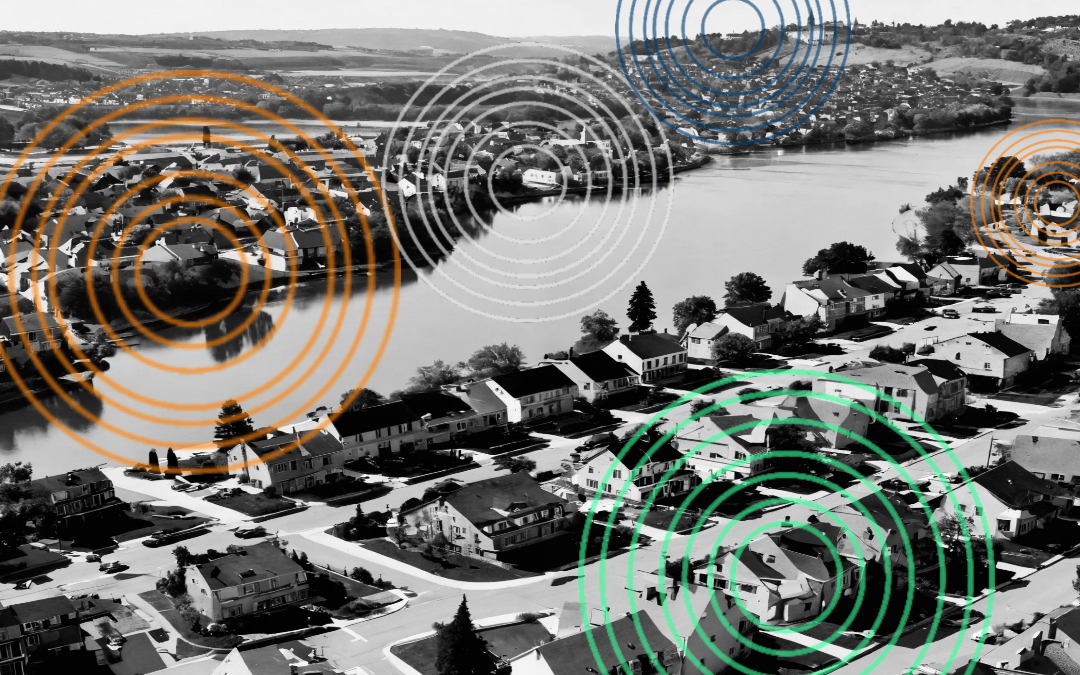What is Geofencing?
Geofencing is a location-based technique that involves setting virtual boundaries to target specific audiences based on their location. This allows delivery of personalized and relevant content to people who are potentially interested in the message. The technology uses various communication technologies such as the Global Positioning System (GPS), radio frequency identification (RFID), Wi-Fi, or cellular data to define a virtual geographical boundary.
When a device enters or exits this boundary, it triggers a targeted marketing action, such as sending a notification, mobile ad, or other forms of communication to the user’s device. Geofenced areas can include one building, a neighborhood, convention center, or an entire town. The area can be geofenced for a particular period of time, or on an ongoing basis.
How Geofencing is used in Marketing
This technology has become increasingly popular due to the widespread use of smartphones and the potential to engage with customers at key moments. It’s useful for any type of organization, and we’d love to talk with you about how geofencing might work for yours.
Geofencing has become a powerful tool for marketing attribution. Through the use of Conversion Zones, marketers can identify when consumers take action on geofenced messaging. This can help influence additional marketing strategies, and quantify the ROI of a marketing investment.
An example:
Imagine that a new organic market is opening with the intention of competing with Whole Foods. The new market might geofence the Whole Foods locations within a 10 mile radius of their location, enabling them to send targeted messaging to people who actively shop at Whole Foods. By creating a Conversion Zone around their own location, they can then track the number of new customers they secure, who previously shopped at Whole Foods.
Some Benefits of Geofencing in Marketing
- Increased Sales and Customer Engagement: According to a survey, almost 90% of marketers have experienced increased sales, more customer engagement, and a deeper understanding of their audience from using location-based marketing. Mobile ads with geofencing have double the click-through rate of the industry average.
- Timely Content Delivery: Geofencing marketing allows for timely content delivery, making it easier to get the word out to customers most likely to take advantage of limited-time offers at brick-and-mortar stores.
- Hyper-Targeted Advertising: Geofencing allows businesses to advertise specifically to potential customers within a certain geographic radius. It constructs a virtual boundary around a business location and can be used to send targeted advertisements showcasing better product selection, lower prices, or discount opportunities to consumers entering rival stores.
- Location-Targeted Messages: With geofence technology, businesses can provide customers with location-targeted messages, pinpointing precisely where their customers are and engaging with them at the right time and location, which increases customer satisfaction and loyalty.
- Geofencing for Recruiting: Geofencing can be used to search for and recruit highly sought after medical personnel, executives, programmers, and others with specific skills. Messages can be directed to any number of devices, including specialized ads that only targeted individuals will see while watching TV at home.
Best Practices and Tips
- Know your target market well. It’s tempting to deliver your message to “anybody,” but the truth is, anybody is nobody. Understanding the ideal respondent to your message helps in crafting the right message—the one they’re most likely to respond to. That’s something we do well at BryteBoost.
- Transparency with Customers: It’s important to be transparent with mobile customers about how their information is accessed, especially when it’s through the app they use. This builds confidence in interacting with the app and location-based marketing and helps customers feel comfortable returning in the future.
- Measurement and Analytics: Reviewing the data on a regular basis is crucial to identify what works and what needs tweaking. This allows businesses to measure the effect of geofencing campaigns and confirm if devices visit a retail location after being delivered any kind of advertising, ensuring better accuracy. This is a standard part of BryteBoost’s geofencing services.
- Targeting Methods: Geofencing allows for various targeting methods, including context targeting (such as messaging to event attendees), day-parting, content targeting, and retargeting, providing businesses with the flexibility to tailor their marketing efforts to specific customer segments.
- Use Multiple Marketing Channels
Make sure to utilize multiple target marketing channels for the best results. Your market needs to be exposed to your message multiple times before they respond to it.
As with any marketing plan, it is best to mix and match multiple different marketing strategies to crush your SMART goals. Mix geofencing with content marketing, search engine advertising, display advertising, and video advertising, and any other methods that are right for you, in order to customize and target multiple, specific audiences. If you’re not sure what the optimum mix is, we can help you with that.
In conclusion, geofencing has emerged as a powerful and cost-effective tool for location-based marketing, enabling businesses to engage with customers at key moments and deliver personalized content based on their location. With the increasing number of smartphone users, now is an opportune time for businesses to explore and implement geofencing strategies to enhance their marketing efforts.
We hope that this brief overview is helpful to you. Of course, we couldn’t possibly cover every use case, so we’d love to have a conversation with you about how geofencing might benefit your organization. Contact us at [email protected] to start the conversation.
©2024 BryteBoost

